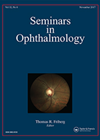You searched for "immunosuppression"
NYU Langone Health performs world’s first whole-eye & partial-face transplant
15 November 2023
|
NYU Langone, eye transplant, Face transplant, surgery, therapies, Aaron James, USA, Eduardo D. Rodriguez
Landmark whole-eye transplant is a major paradigm shift for potential vision therapies.
Typical and atypical optic neuritis – diagnosis and initial management
1 June 2016
| Srilakshmi Sharma, M Isabel Leite
|
EYE - Neuro-ophthalmology
Optic neuritis is a relatively common presentation to ophthalmologists in the acute setting. The vast majority are cases of ‘typical’ optic neuritis (ON) but a smaller group of conditions, so-called, ‘atypical’ optic neuritides require a different work-up and management strategy....
Resurfacing the ocular surface
1 April 2016
| Harminder Dua (Prof)
|
EYE - Cornea
The ocular surface (OS) is an anatomical and functional unit made of the tear film, the conjunctival, limbal and corneal epithelium, the lacrimal, mucous and meibomian glands and the lids and blink reflex. The tear film is composed of a...
Cataract surgery in uveitis patients
Cataract formation is a common complication of uveitis, causing up to 40% of vision loss in these patients. Cataract results from inflammation +/- corticosteroid therapy and is usually posterior subcapsular, but a small proportion have a rapid increase in nuclear...Strabismus in thyroid eye disease
Pathogenesis Thyroid eye disease (TED) is an auto-immune condition, in the initial phase there is lymphocytic infiltration and oedema of the extraocular muscles with deposition of glycosaminoglycans and hyaluronic acid and adipogenesis, which can lead to an increase in the...The results of the last survey Apr23
3 April 2023
| Amar Alwitry
|
EYE - General
*Please be aware that this data does not form part of a peer reviewed research study. The information therein should not be relied upon for clinical purposes but instead used as a guide for clinical practice and reflection. My thanks...
Quiz Dec/Jan 2023
1 December 2022
| Christopher Bell, Elizabeth James
|
EYE - General
History A 35-year-old female presented to the emergency eye clinic with an acutely red, painful, photophobic left eye. She was a contact lens-wearer but denied swimming, showering, or sleeping in her lenses. She resided on a farm and worked as...
Immunoglobulin G4-related ophthalmic disease – what is it? (Part 2)
3 April 2023
| Li Yen Goh
Part 2: Clinical presentation and treatment (see part 1 here) Introduction IgG4-related disease (IgG4-RD) is understood to have a vast clinicopathological spectrum; nearly every organ has had reported involvement. Similarly, IgG4-related ophthalmic disease (IgG4-ROD) is known to affect nearly every...
Leber’s hereditary optic neuropathy: from lab to clinic
1 October 2016
| Chrysostomos D Dimitriou
|
EYE - Neuro-ophthalmology
|
Hereditary optic neuropathy, Leber hereditary optic neuropathy, mitochondrial optic neuropathy, optic neuropathy
Leber’s hereditary optic neuropathy (LHON) was the first clinically described mitochondrial disorder (1871). This article reviews the pathophysiology and clinical features of LHON with a focus on translational research. G11778A is currently the most common mutation worldwide and is associated...
The past and the future for paediatric ophthalmology
1 June 2018
| Jane Ashworth, Chris Lloyd (Prof)
|
EYE - Paediatrics
The past 25 years have seen remarkable advances in clinical eye care for children in the UK. This has led to both improved outcomes and better patient and family experiences. There have been substantial changes to patient pathways, major advances...




